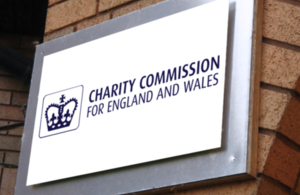This Government continues to welcome constructive criticism and scrutiny, but believes that it is also important that it can set out its own case fairly. The newspaper article, which repeats misleading assertions to which the Government has previously responded, did not include the on the record Government spokesperson quote addressing the claims which was sent to the newspaper.
This is the third time the Government has chosen to respond to inaccurate and misleading articles on this topic in the Financial Times, and this response should be read in conjunction with the other two responses, here and here.
Scientific modelling at the start of the coronavirus crisis suggested that the NHS was going to run out of ventilators. The Financial Times itself echoed these concerns, writing in its Leader of 13 March: “While the NHS insists it is fully prepared, moreover, some officials question whether enough is being done to provide the extra intensive-care facilities, ventilators and emergency staff needed. To allow for the possibility that a large part of the population will, over time, fall ill, preparations on a scale rarely seen in peacetime will be more vital than ever”.
As a result of these concerns the Government took action, launching a Ventilator Challenge with a call to arms to British manufacturers and medical device companies to step up production of existing designs and design new ventilators from scratch.
The Ventilator Challenge formed a vital part of our strategy to increase the number of ventilators available to the NHS. In just three months, over 9,700 new machines have been produced through the Ventilator Challenge and are available to the NHS frontline. This represents nearly double the number of ventilators that the NHS had outside operating theatres before the crisis arose. This is a significant success. Thanks to the extraordinary sacrifices of the British people, and industry in joining the national effort, the progress of the disease has not placed the demands on NHS ventilators which scientists had predicted several weeks ago. The NHS has had sufficient ventilators at every stage of the Covid-19 crisis.
As part of the Challenge, specifications for new models of ventilators were developed. These specifications for Rapidly Manufactured Ventilator Systems [RMVS] were written by expert clinicians and owned by the relevant regulator the Medicines and Healthcare Products Regulatory Agency (MHRA). The specifications were clarified and updated throughout the pandemic to reflect the evolving scientific and clinical understanding of Covid-19.
Claim:
The government’s drive to build thousands of basic ventilators risked wasting resources and delivering worse patient outcomes.
Response:
The Government’s strategy to increase ventilator capacity was always focused on three pillars – as set out previously – first, procuring more devices from existing manufacturers overseas; second, scaling up production of existing ventilator suppliers, and third, working with industry to design and manufacture new devices. The Challenge has always been focused on the second two pillars of the strategy. This has so far produced and made available to the NHS; 8,291 Penlon ESO 2, 350 Breas Vivo 65, 575 Breas Nippy 4+ and 504 Smiths paraPAC. These are not ‘basic’ ventilators.
Every patient who has required a ventilator during the pandemic has had access to one. Although some may choose to criticise the Government’s approach, the Government’s entire motivation for the Challenge was the belief – informed by scientific modelling – that demand for ventilators was expected significantly to exceed supply. The Government’s three pillar strategy means that the NHS now has access to over 22,000 mechanical ventilators.
Claim:
Concerns were raised about the dangers of “over-prioritising basic designs”. British industry was asked to come up with simple designs for mass production.
Response:
The Government has never over-prioritised basic designs. The four devices in production are not basic designs and have gone beyond the minimum requirements set out by the RMVS specification. Three already have a CE-mark demonstrating conformity with industry-standard health and safety requirements.
Claim:
There was a risk that rudimentary ventilators might harm patients.
Response:
All medical devices must go through stringent testing and regulatory clearance. The regulator, the MHRA, would never have given their approval if there was deemed to be a risk to patients.
Claim:
‘In the memo from the Clinical & Technical Advisory team to the MHRA, dated April 5, the panel warned that pursuing basic designs “will result in the need for more ventilators, more oxygen, more drugs, more ventilator days, more staff and almost certainly worse patient outcomes”.
Response:
The ‘Clinical & Technical Advisory team’ are not advisers to the MHRA. They had no role in advising on the specification for the design of ventilators. The group were working with Cambridge Consultants designing one of the Ventilator Challenge devices, the Veloci-vent.
Claim:
“The government ran a ‘village hall’ type competition to reinvent a complex medical device.”
Response:
To suggest that it was a ‘village hall’ type competition undermines the extraordinary effort and achievements of everyone involved, including clinical experts and the medical regulator the MHRA. The Government is hugely grateful for the dedication, ingenuity and collaboration shown by industry in coming together as part of the national effort to protect the NHS and save lives.
As has been set out above, four Challenge devices are currently in production, while another four devices were deemed ‘credible’ by clinicians, including three of the novel designs.
Claim:
‘If I was in government I would have gathered the people who could do this.’
Response:
This was precisely the approach that the Government sought to adopt. As part of the Ventilator Challenge the Government paired existing medical device manufacturers like Penlon, with large British manufacturers including Surface Technology International Ltd, McLaren, Airbus and Ford to scale up their production. 8291 Penlon ESO 2 devices have been produced and made available to the NHS through the Ventilator Challenge.
Claim:
“The April 5 note to the MHRA shows how clinical and technical experts voiced their misgivings about the “Challenge” concept. About £185m has been spent so far and the government has said the total cost could rise to £545m.”
Response:
The Challenge concept has delivered over 9,700 ventilators to the NHS frontline in just three months.The Government has never said that the cost could rise to £545m. This overstates our estimate of the maximum cost by £91m.
Claim:
“While the teams showed incredible ingenuity, it was clear that we were going to end up with products that were not fit for purpose.”
Response:
The teams did indeed show incredible ingenuity and we have ended up with four Ventilator Challenge devices in production, with a total of over 9700 new machines available to the NHS frontline. Four further devices were deemed credible by clinicians but were ultimately not progressed due to reduced demand on the NHS.
Claim:
“Frontline healthcare professionals were not sufficiently involved in the design process.”
Response:
This is untrue as we have set out previously. Frontline healthcare professionals were involved in every stage of the process, and MHRA specifications were drafted by clinical experts, with input from those specialising in intensive care treatment.
Claim:
“An initial MHRA design specification issued on March 18 called for ventilators that, at a minimum, would be capable of providing “short term stabilisation for a few hours”. In the memo, the independent advisers urged a shift towards more sophisticated devices that incorporate ‘spontaneous’ breathing modes.” As we set out previously, on the Prime Minister’s call to manufacturers on 16 March, Emily Lawson, Chief Commercial Officer of the NHS, emphasised the need for devices to operate 24/7, and the importance of spontaneous breathing modes. She said: “They need to be able to operate 24/7. They need to have a failsafe in case of fire. They need to provide oxygen and air at specified concentration, at set volume and to not exceed a set pressure. They need to be able to provide positive pressure at the end of exhaling, at a pressure set by the clinician. They need to have both mandatory and spontaneous breathing modes so that as people start to breathe for themselves the machine recognises and responds to that”
Most Ventilator Challenge devices had a spontaneous breathing mode or were developing them. These include: Vyaire LTV2, Swagelock Piran Vent, Cambridge Consultants Veloci-vent, Sagentia Ventilator, TTP/Dyson CoVent, BAE Systems Aircare, Babcock Zephyr+, Breas Nippy 4+, Breas Vivo 65 and Penlon ESO 2.
The ‘independent advisers’ described by the FT actually worked with Cambridge Consultants who were designing the Veloci-vent device.
The letter from the group was written ten days after the MHRA updated their specification to further emphasise the importance of spontaneous breathing modes.

